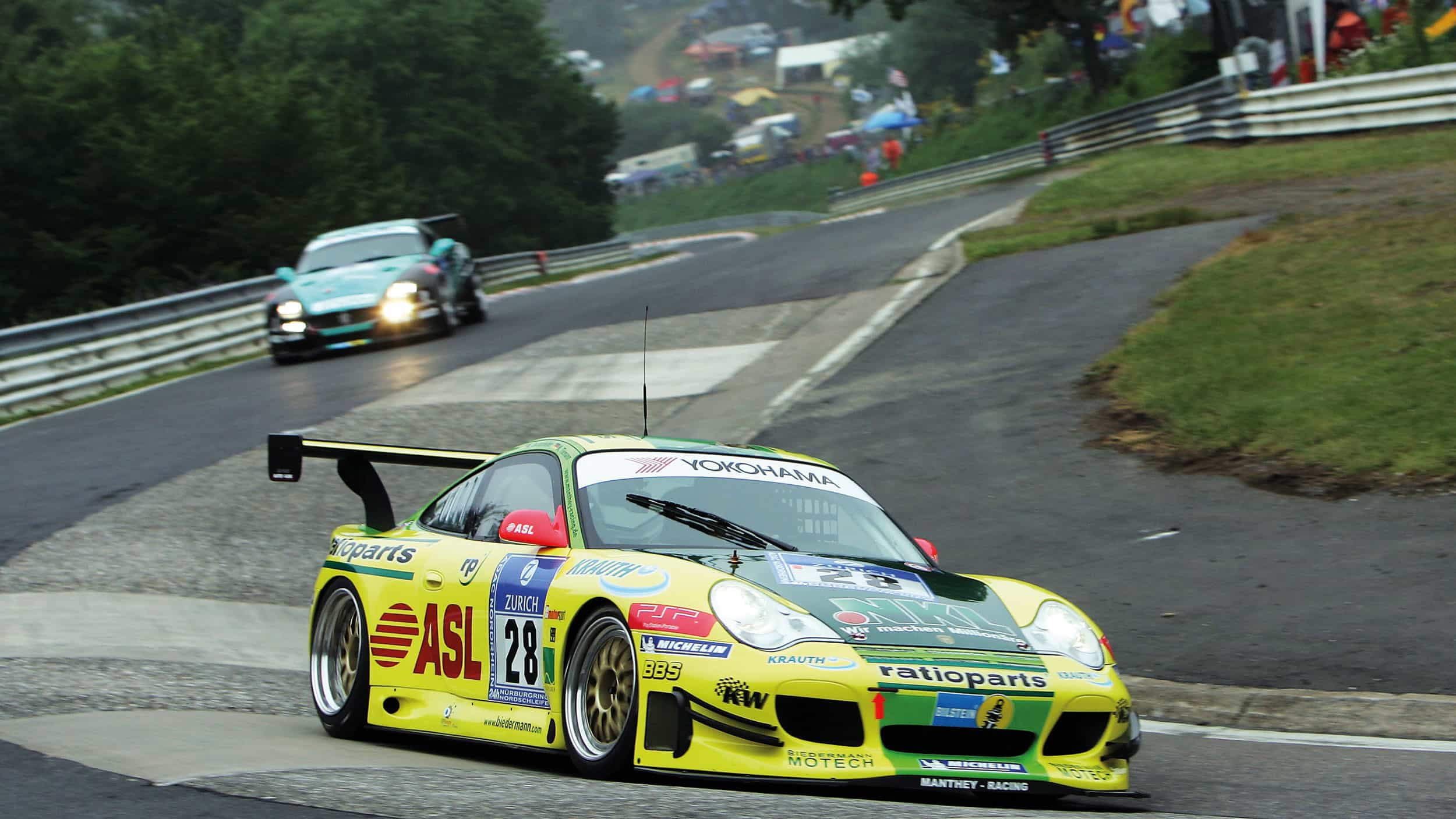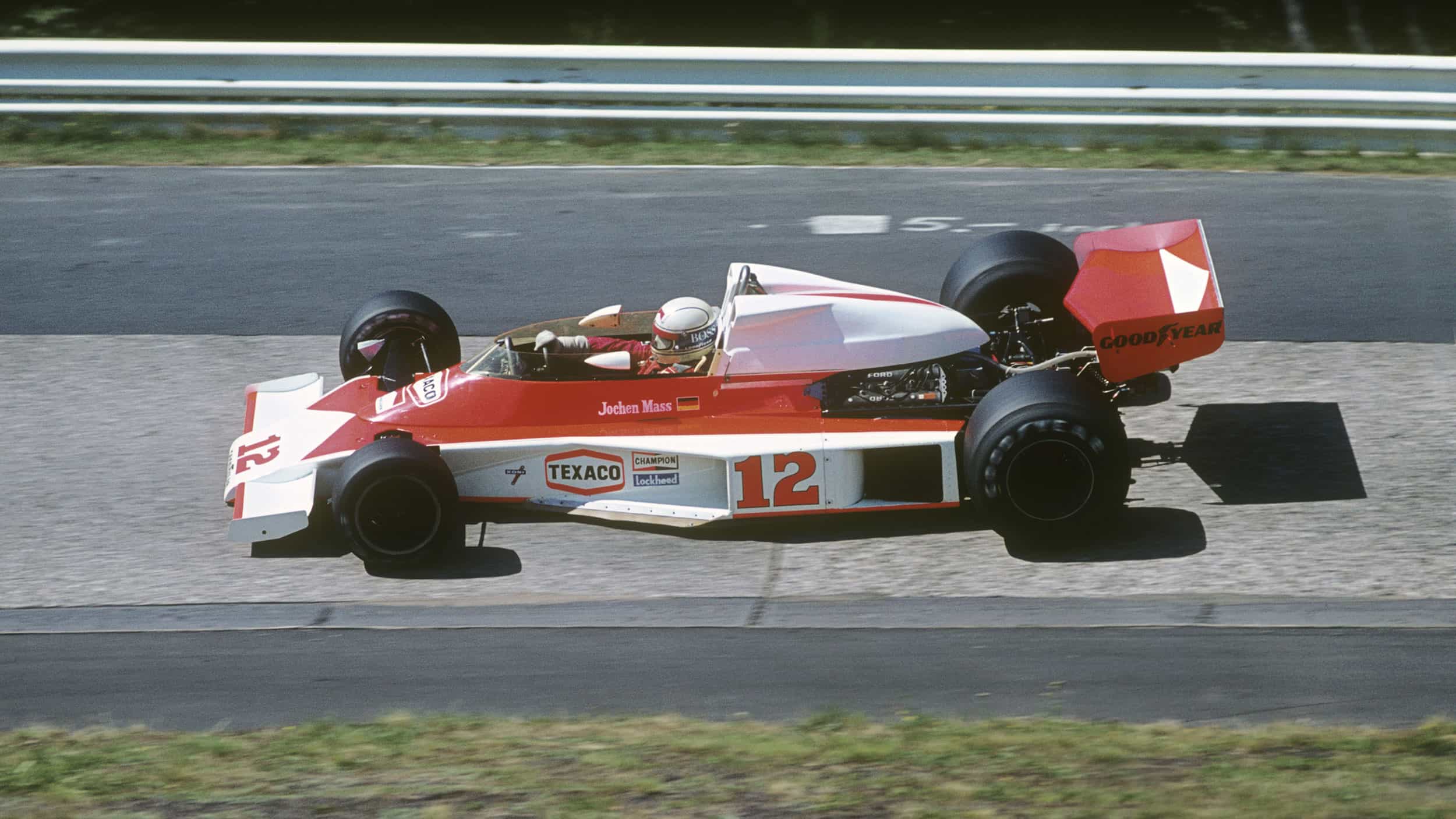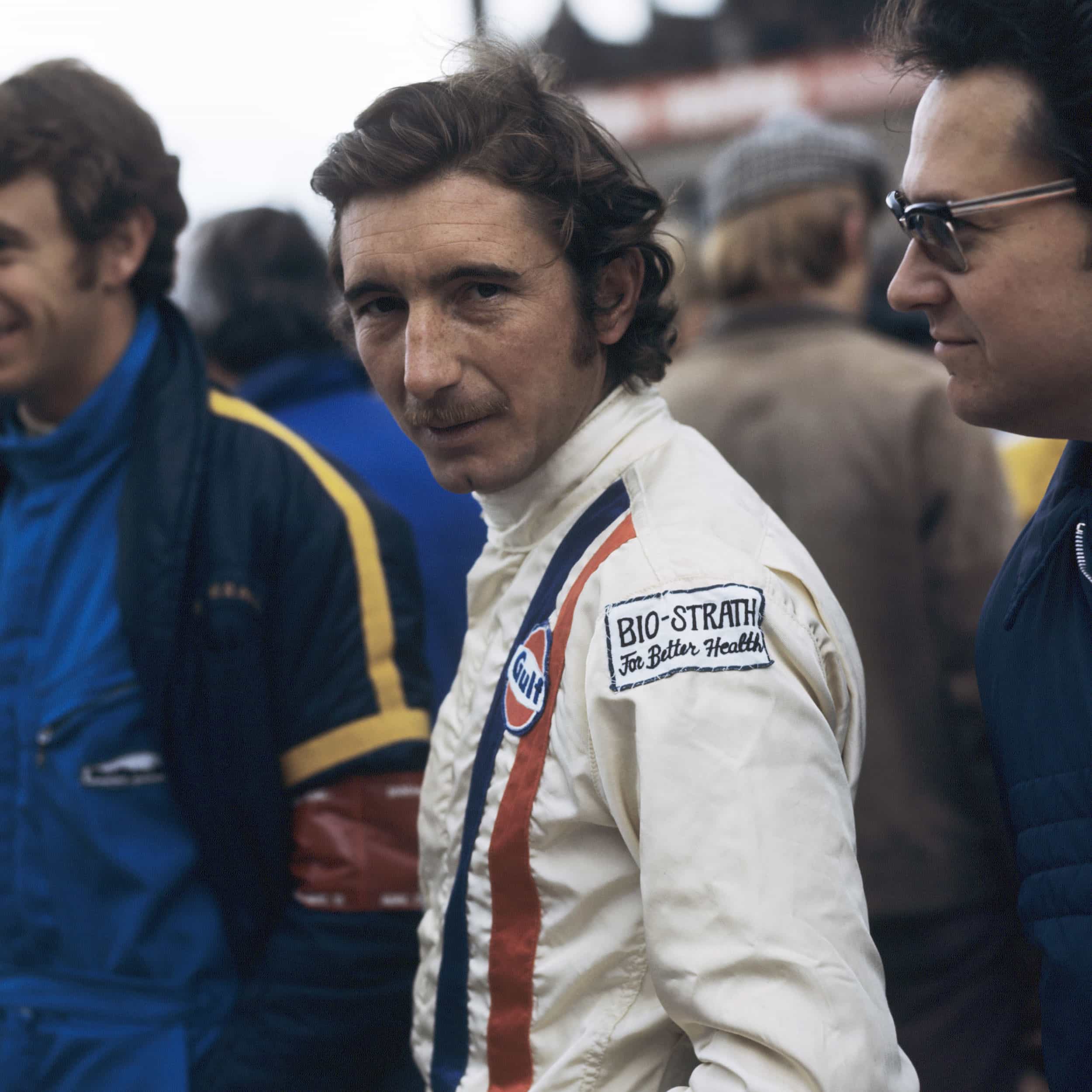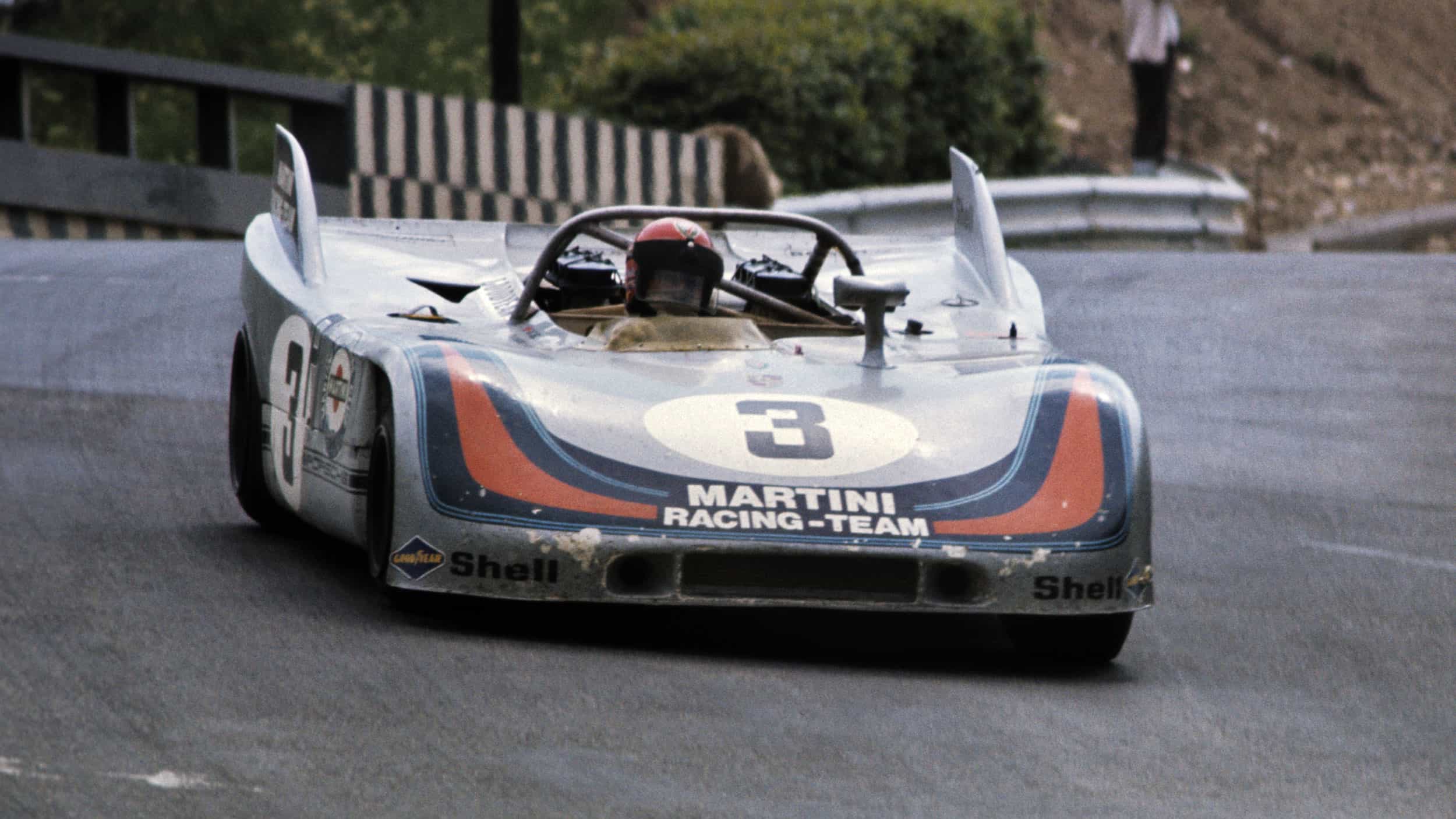Ringmasters: Top 20 kings of the Nürburgring
Since racing began at the Nürburgring in 1927, plenty have tried to conquer the Green Hell, and plenty have failed. But not this lot. From those heady days of endurance-style Formula 1 grands prix, to sports car, GT and touring car races, Paul Fearnley assesses the greatest drivers ever to tackle the Nordschleife, and sticks his neck out to rank them. Only one can be the true King of the ’Ring
Getty Images
20 – Rolf Stommelen
Bespectacled and spectacular, a precocious talent unfulfilled in F1
Signed by Porsche when just 22 in 1966, he finished second consecutively at the Nürburgring 1000Kms from 1968, in works 907 and 908/2, and also for Alfa Romeo at the Oil Crisis-hit 750Kms of 1974. He showed well for the Italians – fastest lap in 1972 amid superior Ferraris – but the cars were unreliable. The win, when finally it came in a Porsche 935 in 1977 involved another fastest lap. There was an Interserie success in a Porsche 908/3 Turbo, plus victories in Ford and BMW saloons, including the 1972 ETCC round in a 2800CS. Eighth on his 1969 F1 debut, he scored the first point for carbon-fibre brakes in ’76. There was to be another 1000Kms runner-up spot, before his fatal accident at Riverside in 1983.
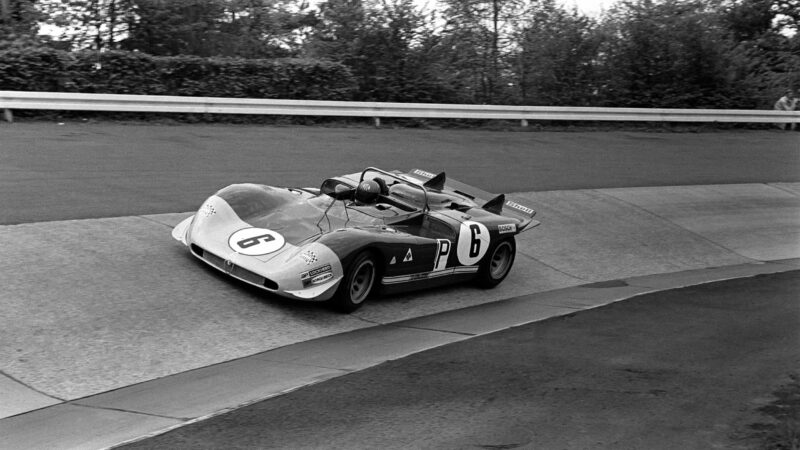
Alfa Romeo T33-3 at the Karussel
Alamy
19 – Timo Bernhard/Marcel Tiemann
Endurance royalty, predictably calm, calculating and quick amid the chaos
This formidable pair combined – in conjunction with Messrs Dumas and Lieb (thrice), and Luhr and Rockenfeller (once) – to win the 24 Hours four times in a row from 2006 in Manthey GT3 Porsches. Both have a record five wins – as does Pedro Lamy – to their names: Tiemann’s first was scored in an Opel Astra V8 in 2003, and Bernhard’s most recent was achieved the season after Tiemann’s career-ending Imola crash of 2010. Bernhard’s Bellof-busting 5min 20sec lap of 2018 in a derestricted Porsche 919 Evo was mind-blowing; but Tiemann, with 19, has almost double his number of wins in the VLN endurance series at the track. Fate separated them. We cannot.
18 – Jochen Mass
German strongman who so easily could have lifted the biggest trophy
The only driver shunning wets – due to a mix of local and insider knowledge – for the start of the 1976 GP, his McLaren was 30sec ahead after two laps. His first thought upon seeing red flags was that his advantage had been deemed too great; they were, of course, flying because of Niki Lauda’s fireball. The race eventually reset, with slicks universal, he would have to settle for third place. His single-seater wins were limited to the F2 Eifelrennen of 1972 and 1977, in Marches both. Having scored minor sports car victories in Porsches 935 and 908/80, he made (partial) amends for missing out in the final GP held at the circuit by winning its final 1000Kms, bringing his works 956 home in tricky conditions in 1983.
17 – Jo Siffert
Last of the late brakers, the Swiss who knew only one way: flat out
Hampered by fuel injection bothers, he swapped to a less powerful Porsche to qualify fastest for the 1000Kms of 1968. Preferring to start – the last run-and-jump affair – from 27th in his original chassis, however, he was fourth by the end of the opening lap and leading by the second. And having crashed testing his intended car – its new-shape bodywork aerodynamically flawed – he would use an older-style car to dominate the race in 1969.
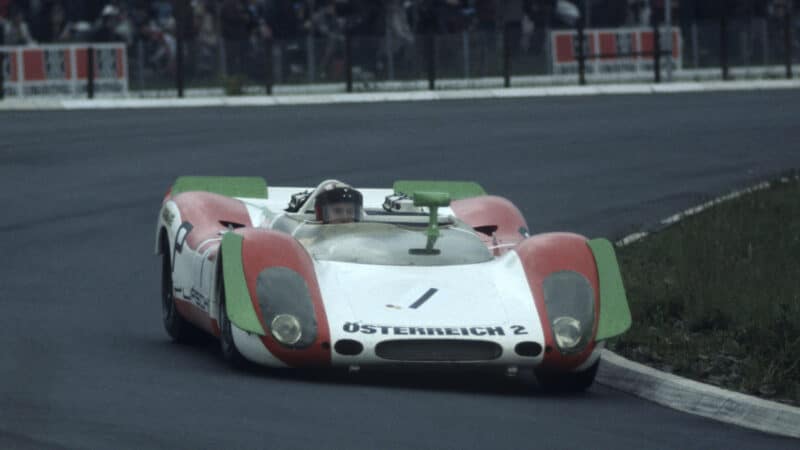
Siffert aboard the Porsche 908 he used to win the 1968 1000Kms alongside Vic Elford
New recruit Pedro Rodríguez thereafter challenged Siffert’s hegemony at Porsche, but it was Jo who qualified on pole in 1970 – and retired from the lead because of an engine problem. He then joined Rodríguez in finishing second in 1971 after his own 908/3 had collapsed around him. Fourth in the 1964 GP in a privateer Brabham-BRM and classified fifth in 1969 having lost a secure third place when the suspension on his Lotus broke. His best single-seater performance, however, was the second place from pole position for BMW at the F2 Eifelrennen of 1969.
16 – Hans-Joachim Stuck
From impeccable racing stock, born, raised and revered at the Nürburgring
He was just 19 and in only his second season when he won the inaugural 24 Hours of 1970 – and 53 by the time of his third: from BMW’s 2002 TI to its M3 GTR of 2004 via the 320D of 1998. His famous father, winner of the 1934 GP for Auto Union, had taught him to drive there. He celebrated 1972 Rennsport-Meisterschaft wins in a Capri, a 1973 ETCC success in a BMW CSL, pole (1973) and fastest lap (1975) in F2. His declared win in the 1981 1000Kms in a BMW M1 Turbo was marred by the fatal accident that befell Herbie Müller.
15 – Dan Gurney
Jim Clark’s most feared opponent was the co-driver Stirling Moss admired most
Had he not been forced to hold a loose battery at his feet for much of the rain-soaked 1962 GP, he might have won for Porsche instead of finishing third; he had qualified fastest by 3sec. He might have won in 1964, too, if newspaper caught in the radiator hadn’t caused his Brabham to overheat. And he would have won in his self-built Eagle in 1967 but for a broken UJ. Luck held for the 1000Kms of 1960. Pitting early with his Maserati awash with oil due to a broken pipe, the American shone in the fog and rain as he recouped the 5min lost and regained the lead. Moss admitted he would not have won that day without him.
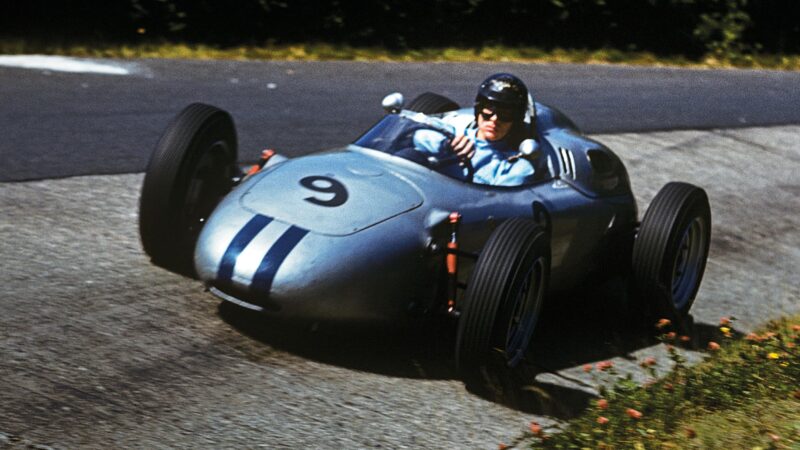
Dan Gurney, Porsche 718
Getty Images
14 – Phil Hill
Smart enough to get his way at Ferrari and to disprove the doubters
Boss Enzo Ferrari reckoned him a sports car specialist. The American in response did all within his power to be allowed a single-seater chance; he seized it in 1958 and would be crowned F1 world champion by 1961. Though he did not win that year’s German GP, he qualified on pole by 6.2sec and set fastest lap but was third. Still, Enzo wasn’t entirely wrong: Hill had finished third in his first Nürburgring 1000Kms (1956) and followed that with fourth, second and third places. In 1961, he was leading when a plunging chill caused his engine to stutter and a crash to ensue.
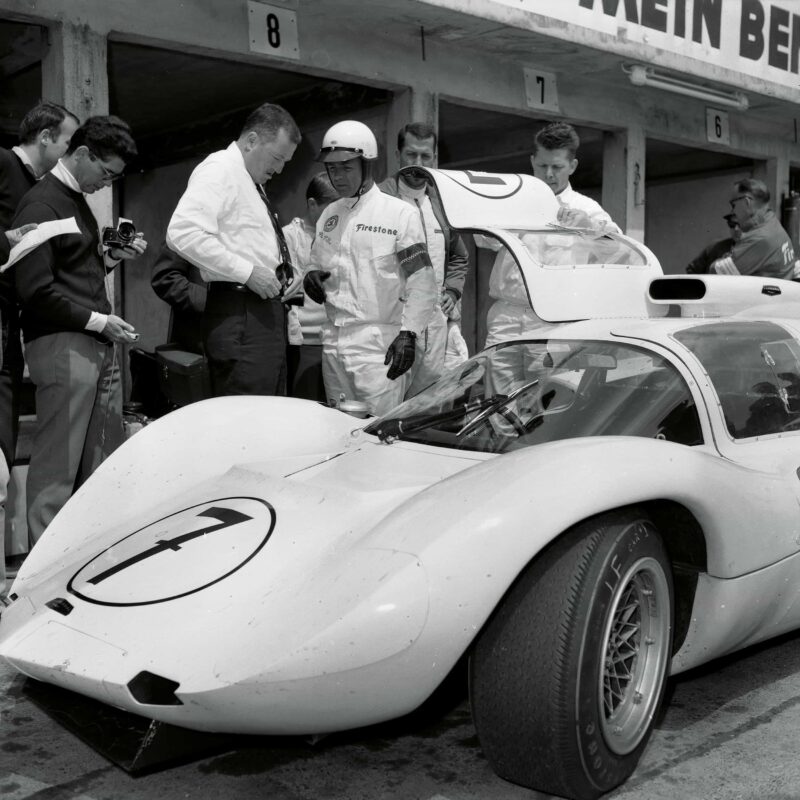
Hill with the 1966 Chaparral 2D. He and Jo Bonnier would take an unexpected, but well deserved 1000Kms victory
Alamy
Finally, he won in 1962: pole, fastest lap and – once conditions came back to him – domination. Tired of Maranello politics by the end of that year, he found a happier home at Chaparral Cars: victory in the 1000Kms of 1966 was unexpected but well deserved – Hill having to lean out while still rolling to clean the windscreen after its wiper had gone loopy. The following year’s car was a be-winged influencer and with it he set pole and easily took the lead – once he realised that he was running second; sadly its transmission failed after setting fastest lap.
13 – Graham Hill
Natural talent bolstered but also shaded by nugget toughness and ferocious focus
The 1962 GP was epic: three genuine greats running nose-to-tail – with a fourth striving mightily to compensate for a self-induced false start – all jinking around in the spray in bids to induce a mistake. Yet Graham Hill, first on the road for 13 (of 15) laps, neither flinched nor wavered in victory for BRM, his marginal supremacy that day underscored by the race’s fastest lap (to take the lead).

Of the 22 world championship grands prix held on the Nordschleife, Graham Hill competed in 14 of them. This is his first win in 1962, just the second of his F1 career
Getty Images
Though he had impressed with sports car class wins for Porsche alongside established circuit aces Moss and Hans Herrmann in 1961 and 1962, it was in single-seaters that he made his mark: second places in the GPs of 1964, 1965 and 1968, plus fourths in 1966 and 1969. His powers were waning by the early 1970s yet still he was happy to mix it with the thrusters of F2 – fifth in the 1971 Eifelrennen – and summoned the resolve to finish ninth, after being left on the grid because of a broken throttle in that year’s GP. Sixth in 1972, and ninth as late as 1974: his final and record 14th GP start on the world’s most taxing circuit.
12 – Vic Elford
Long-time rally star turned instant race ace – albeit a tad too late for Formula 1
His Porsche 911’s co-drivers insisted that he apply his rally prowess to driving the night sections during the 84-hour Marathon de la Route of 1967. Photographic memory for a road thus reinforced during that runaway victory, and having already finished third in that year’s 1000Kms, he would win the 1000Kms of 1968, 1970 and 1971, in 908/2 and 908/3. He also won the 500Kms of 1970 and 1971 in 2-litre Chevrons and Lolas. Elford adapted just as quickly to single-seaters – but couldn’t maximise his potential. He showed speed in both the 1968 and 1969 GPs, but was a victim of first-lap accidents both times.
11 – Tony Brooks
Unhurried yet carrying huge speed, a match for Moss over a lap and on his day
A sensational victory in the 1000Kms of 1957 for the lacklustre Aston Martin squad confirmed this unassuming talent’s place at the top table. He made it look easy – unruffled when the more powerful (and wayward) Maserati of Moss blasted by before shedding a wheel soon afterwards. Both would suffer as team-mates in that year’s GP, their Vanwalls unsuited to the take-offs and landings: Moss finished sixth and Brooks, carrying a significant injury and physically sick in the cockpit, ninth; he had, however, out-qualified his team leader. He would win a year later, hunting down a brace of Ferraris after Moss had retired.
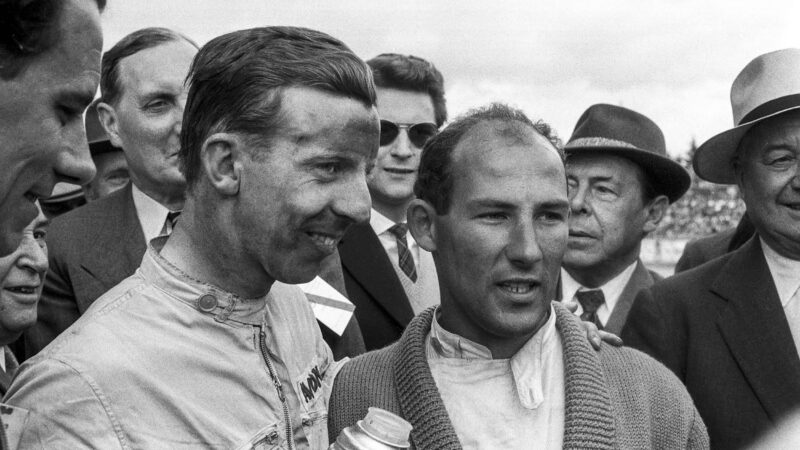
Tony Brooks and Stirling Moss
Getty Images
10 – Jim Clark
The best of his or any generation proved how hard it was to win here
Its top speed was 125mph. Cue collective amazement as Jim Clark’s “mobile shoe” led by half a minute after the first lap of the 1962 1000Kms. A slippery surface suited the 1500cc Lotus sports car, but nobody expected it to lead for 11 laps. Its run only ended when the Scot, drugged by exhaust fumes, failed to catch a slide. Clark prevailed only once here: a pole/fastest lap/flag-to-flag master class – as well as the first 100mph lap and his second world title – at the 1965 GP. But he was always in the mix. In 1967, on pole for a fourth time in five years – by 9.4sec! – he led the first three laps before the car broke.

1962 1000Kms start
Getty Images
9 – Jacky Ickx
Brilliant all-rounder, from devil-may-care F1 hotshoe to cool-hand sports car god
The F2 Matra started the 1967 GP from 18th. It had, however, qualified third and would run fourth until its front suspension collapsed. Its brilliant 22-year-old driver was obviously going to win here one day. He started from pole for Ferrari in 1968, but pitted because of a visor spattered with mud after a spin. When he dropped to ninth at the start of 1969’s GP, his recovery to victory was swift. He’d dominate 1972’s race. Even better – and happier – in sports cars, he won the 1973 1000Kms for Ferrari, and then for Porsche 10 years later.
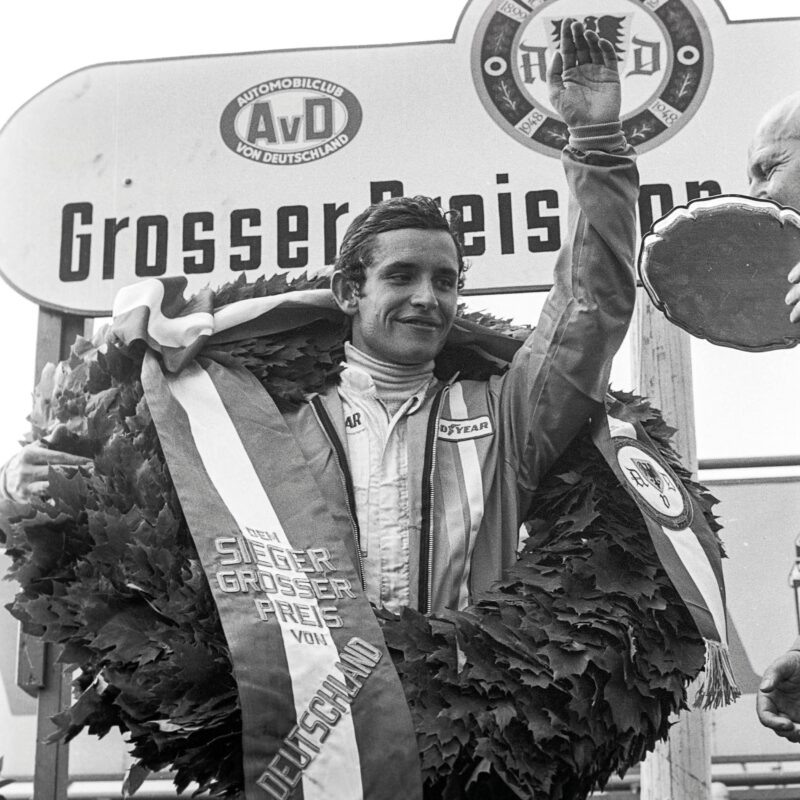
Jacky Ickx celebrates another win
Getty Images
8 – Alberto Ascari
Inveterate pacesetter whom some seasoned observers reckoned faster than Fangio
There was nothing this Italian liked more than controlling a race from the front. But for a loose front wheel in 1953, he would have won four consecutive GPs here – all for Ferrari and from pole. The first, a non-championship F2 event, was completed on broken wheel spokes. The third was achieved after a late unplanned stop for oil. The second was a strategic battle with a more powerful but thirstier rival, and a late stop for tyres. He was a two-time F1 world champion by the time he won the inaugural 1000Kms of 1953, in a handful of a Ferrari.
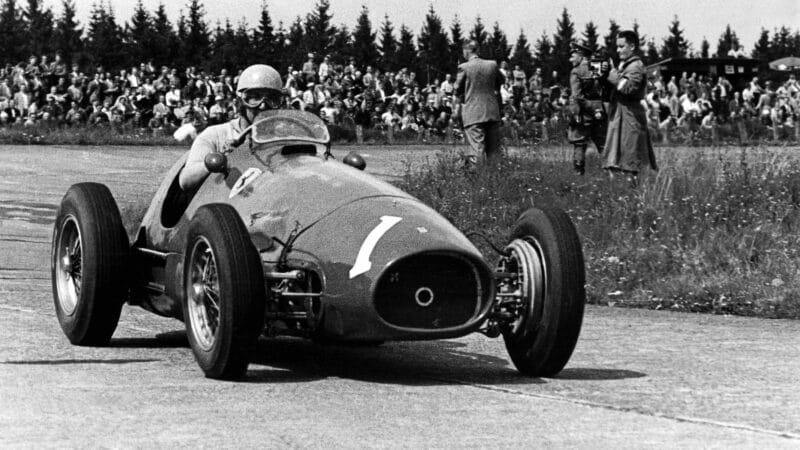
Alberto Ascari 1953
Getty Images
7 – John Surtees
Fierce competitor whose intensity brought success but caused envy and enmity, too
Fifth at his first GP attempt in a Cooper, he was second for newcomer Lola in 1962, a last-lap plan to draft for the lead being foiled by a backmarker. Joining Ferrari provided him opportunity. He not only won consecutive GPs from 1963 – the first despite a misfire and the second from pole and with fastest lap – but also the 1000Kms of 1963 and 1965; a lost wheel and suspension failure cost him leads in the 1964 and 1966 enduros respectively. Second with Cooper in 1966, Surtees was back in a Ferrari to finish third in the 1970 1000Kms.
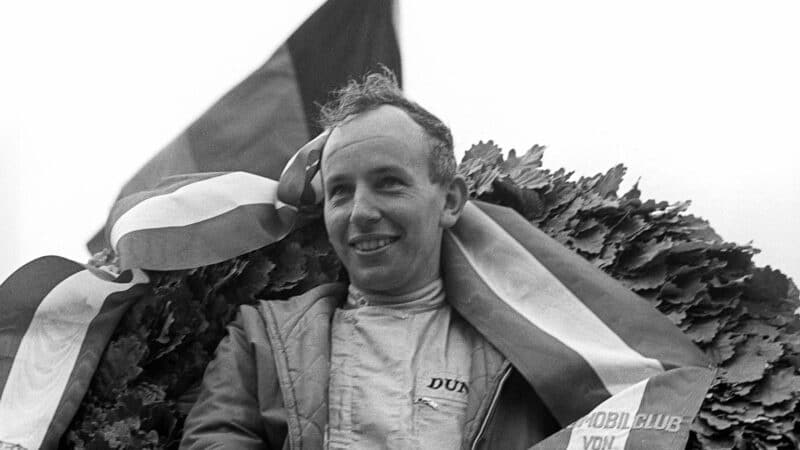
John Surtees
Getty Images
6 – Tazio Nuvolari
The impossible always seemed within reach for this most animated of drivers
His Alfa Romeo, though modified as much as its ageing design permitted, looked old hat in 1935 against nine low-slung Silver Arrows – four Auto Unions, five Mercedes-Benz – and though this racer could never be discounted, his odds seemed insurmountably long.
Yet this battle-hardened 42-year-old recovered from an early spin to be leading at his mid-distance pitstop. Whereupon panicked mechanics sluiced his slim advantage – and much more. Incredibly, he had almost repeated the feat entering the last lap and – such was Nuvolari’s mystique – the remaining Mercedes ahead pushed harder than it needed to, punctured and limped home fifth as Silver Arrows finished second through ninth. A tardy pit stop – choreographed this time – had cost Nuvolari his chance of victory in the 1932 GP, Alfa Romeo preferring that its German star, Rudolf Caracciola, win.
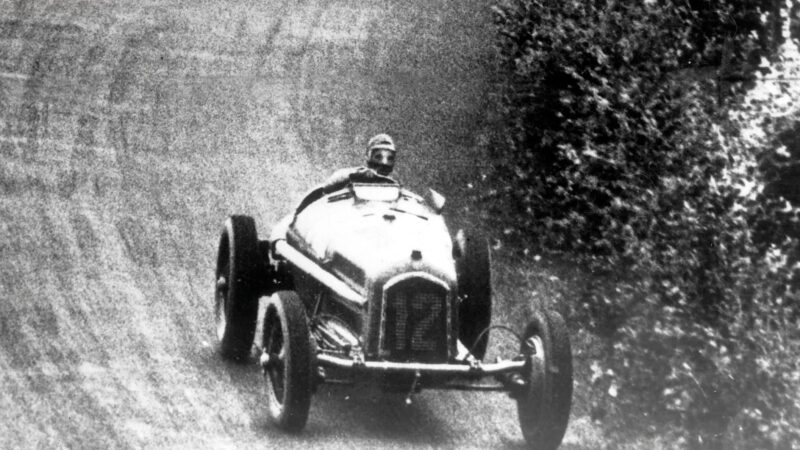
Tazio Nuvolari
Getty Images
He had won the 1933 Eifelrennen, however, albeit in the absence of his (injured) nemesis, and would continue to battle superior German cars – second in the 1936 Eifelrennen and fourth in the GP of 1937 – until even he had to admit that he could no longer beat them. So he joined them: Mercedes was a closed shop – his nemesis its favoured son – but Auto Union was in need. He would finish second in the 1939 Eifelrennen behind one of Mercedes’ new breed and an engine problem lost him the lead of that year’s GP to his oldest rival.
5 – Jackie Stewart
Though arguing that motorsport be a test of skill over bravery, he lacked for neither
It is possible to travel a great distance in a 3-litre GP car in four minutes – even through thick fog and heavy rain. Jackie Stewart was waiting on the pit apron, having parked his victorious Matra, asked team boss Ken Tyrrell if everybody else had made it through okay, kissed wife Helen, removed his crash helmet and loosened the laced plastic brace supporting his broken wrist, by the time its runner-up finished the 1968 GP.
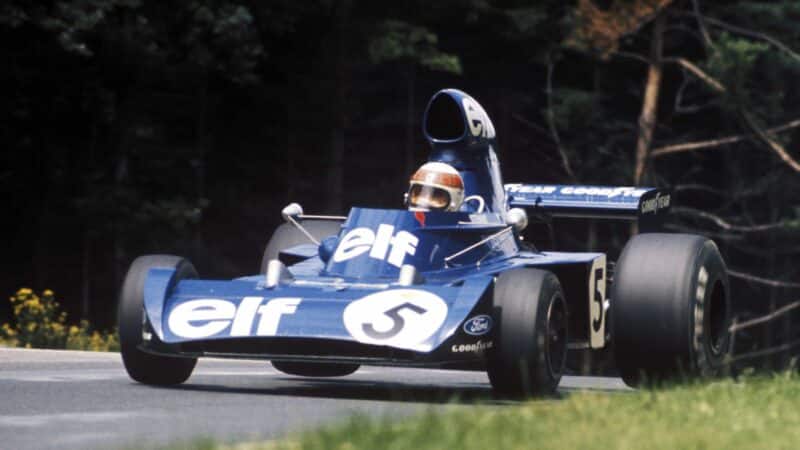
Aside from campaigning for safety improvements, Stewart was stellar at the Nordschleife. This is his final win in 1973, before his impending retirement
Mcklein
Not even the most vociferous critic of his safety campaign could call him chicken: as a rookie with BRM in 1965 he had inside five laps come within fractions of the first 100mph lap. Only once in eight visits – 1968, ironically – would he fail to start the GP from the front row. And in 1969, he won the F2 Eifelrennen by more than a minute and finished second in the GP. The latter was the last held on his ‘Green Hell’. The circuit had at his request been sympathetically landscaped and fringed with Armco by the time of his superb display of 1971. It remained, however, a (faster) challenge demanding utmost respect and skill: Stewart won by a half-minute.
His third GP win, also from pole, featured him leading all the way – but this time his star pupil finished on his gearbox; Stewart respectfully surmised that Tyrrell team-mate François Cevert could have overtaken at will. Having decided before the 1973 season that it would be his last, this was to be the Scot’s final GP victory.
4 – Bernd Rosemeyer
Shooting star who reset the parameters for the sport’s future – if not his own
In a 500bhp Auto Union reckoned twitchy on the limit by vastly more experienced pilots, and in only his second car race, he was signalled to push now that he was his team’s only forlorn hope. His first five laps of the 1935 Eifelrennen had been sensible; the remaining five would be among the most unexpectedly sensational – especially when it rained – in history. He caught Rudolf Caracciola, the track/conditions specialist, hand over fist – and might have won but for a fluffed gear change. Caracciola afterwards warned him to use his brain next time; he couldn’t possibly have known with what he was dealing. When fog across two-thirds of the circuit reduced visibility to 50 metres in places during the second half of the 1936 Eifelrennen, even Nuvolari backed off; Rosemeyer seemed not to notice and won by two minutes. He would win that year’s GP by almost four minutes after breaking the 10min barrier. He won the 1937 Eifelrennen, too, after completing an outrageous outside pass to take the lead. A mistake would lead to a loose wheel in the GP, but he’d still recover to third.
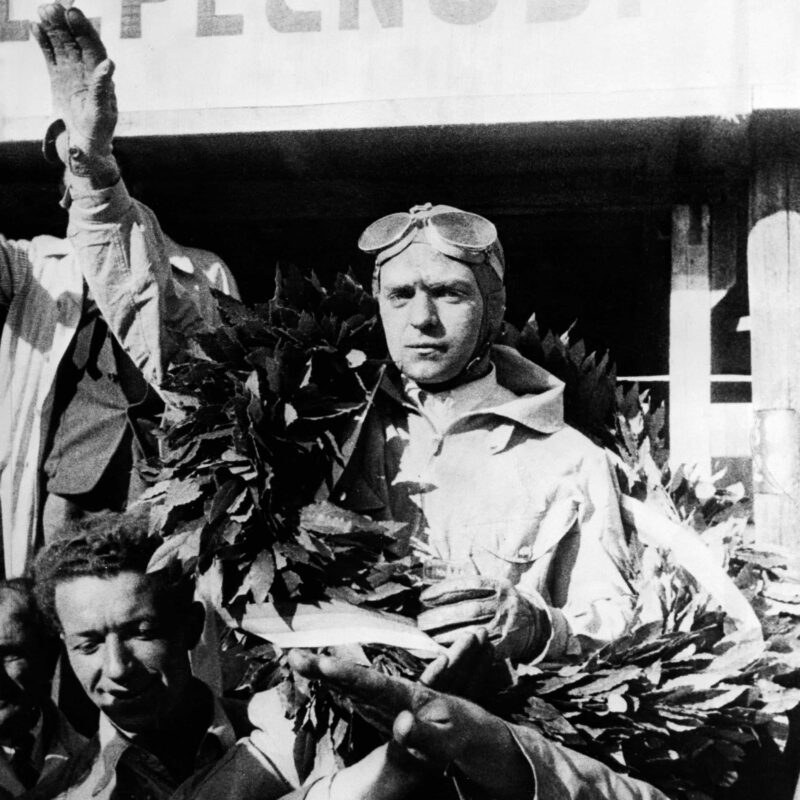
Rosemeyer made an instant impact on the sport with his Nordschleife debut, rattling the established drivers
Getty Images
3 – Rudi Caracciola
Efficiently smooth operator both in and out of the cockpit: the Prost of his era
The winner of its inaugural car race – the 1927 Eifelrennen – would set fastest lap in winning the circuit’s last major event held (just two months) before the outbreak of WW2. Caracciola bestrode this period, winning the GP here on a record five occasions. He also won on all of its layouts: the familiar Nordschleife, shorter Südschleife (1931 Eifelrennen) and the Gesamtstrecke (including the 1928 GP) that combined the two.
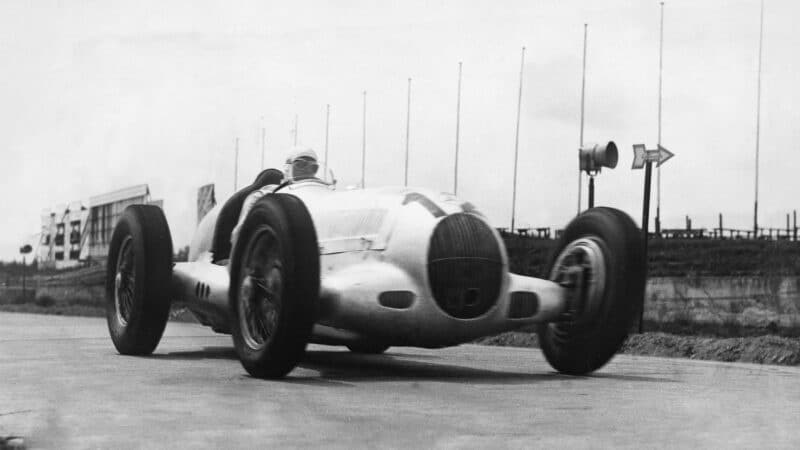
Rudolf Caracciola’s record at the Nordschleife is immense, winning on half his appearances
Getty Images
Before the debilitating injuries sustained during practice at Monaco in 1933, he was an out-and-out match for Nuvolari, be it at the wheel of a vast Mercedes-Benz, particularly in the wet, or as the Italian hero’s team-mate in lithe Alfa Romeos. His approach would necessarily be different upon his return. Recovered by 1935, he used his political and strategic nous to pull the Mercedes-Benz team tightly around him and push his equipment – particularly tyres failing to keep up with the pace of change – just hard enough.
Rosemeyer was the quicker, but ‘Caratsch’ beat him in the 1935 Eifelrennen and the 1937 GP. Team-mate Hermann Lang was eventually the quicker, too, but it was ‘Caratsch’ – in the changeable conditions at which he excelled – who won the 1939 GP after his three team-mates had retired. Nine wins, two seconds (one shared) and two thirds, plus four retirements – none because of an accident – from 18 starts spread over 12 years: the complete competitor.
2 – Juan Manuel Fangio
Charismatic stylist blessed with supernatural speed, stamina and fighting spirit
He felt that he had mastered his favourite circuit finally. No matter the many previous wins, poles and fastest laps, he believed that he had never driven as quickly and that nor could/would he again. He was 46. He had never finished lower than second in four GP starts. He won for Mercedes-Benz in 1954 – after the death of protégé Onofre Marimón in practice – and for Ferrari in 1956; the 1955 race was cancelled. The loss of second gear had cost him an outside chance of winning in 1951, and in 1953 his Maserati was beaten by another better Ferrari.
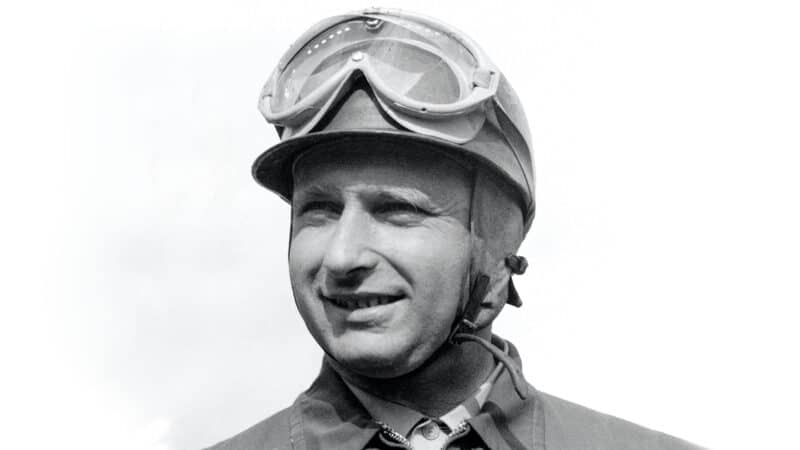
Juan Manuel Fangio
Getty Images
But his victory for Maserati in 1957 was the pièce de résistance. A strategy of starting on half-tanks and fitting new tyres at half-distance horribly compromised by a comedic pit stop that wasn’t funny, he remorselessly reeled in much younger opponents with a sequence of a-gear-up-everywhere lap records, before pulling some robust overtakes. Fangio’s sportscar performances paled in comparison, though he can hardly be considered a slouch: pole for Lancia in the 1953 1000Kms; victory from pole in the Mercedes-Benz demo that was the 1955 Eifelrennen; pole and fastest lap on his way to second for Ferrari in the 1956 1000Kms. Rounded off with a pole in Maserati’s fearsome 450S ‘Bazooka’ in 1957.
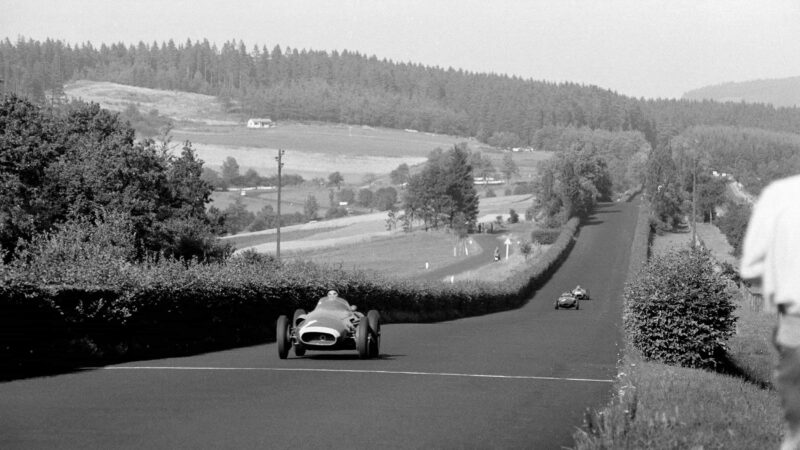
A grand prix master, Fangio continued winning well into his golden years. This is his glorious 1957 performance for Maserati when even a botched pitstop couldn’t deny him
Getty Images
1 – Stirling Moss
Top dog who thrived in the role of underdog; a scrapper always on his mettle
How he won was as important – probably more so – than how many and by how much. At his best as an outlier with his back to the wall and foot to the floor – preferably with a Ferrari or three in his sights – his uncanny hand/eye/backside co-ordination and potent athleticism/fitness, willingness to gamble and knack for making it pay, made him your worst nightmare. He won a lot, of course, and lost more than a few – but never knew when he was beaten.
Having learned his craft here, as he had much everywhere else, in second-skin 500cc single-seaters – setting the pace four years in a row and winning twice – he assiduously followed Fangio’s wheel tracks at Mercedes-Benz in 1955. He would always cede to the Argentinian’s talent in GP cars, but he had the measure of him in sports cars: switching to the third-placed Maserati after his own had broken a rear spring when leading, he overhauled Fangio to win the 1000Kms of 1956: the first of four wins in five years, each of them legendary.
In 1958, he drove 36 of 44 laps – Aston Martin co-driver Jack Brabham had little experience of either car or circuit – to beat a quartet – the more, the better – of Ferraris. Shattered by the effort, it took a week for Moss to recover; his epochal 1955 Mille Miglia win had taken less out of him.
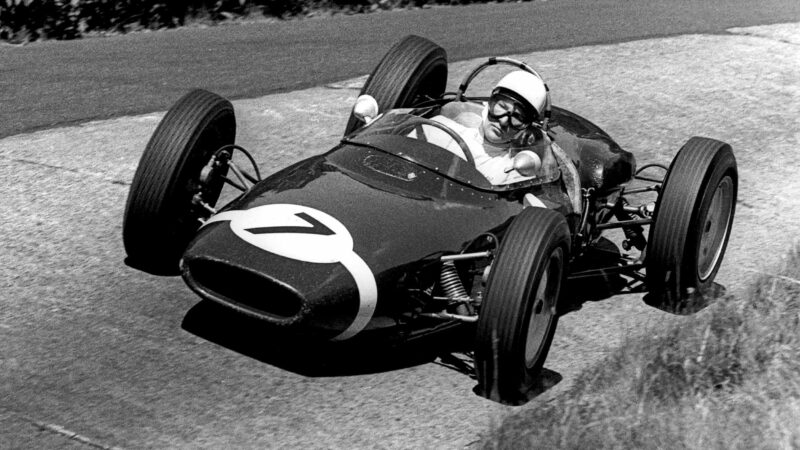
While Moss’s successes were largely in sports car at the Nürburgring, his crowning glory was his victory for Rob Walker in 1961, his final grand prix win
Getty Images
In 1959, co-driver Jack Fairman, selected as a safe pair of hands in a lone Aston Martin entered mainly at Moss’s expense, slid into a ditch when wrong-footed by a slower car; somehow he manhandled it out after six minutes’ straining. And somehow Moss, already packing up when finally the car returned, made up that time – plus 41sec – against faster (in theory) Ferraris.
The 1960 win was more straightforward despite a delay due to a broken oil pipe, and due in part to terrible weather playing to his car’s strengths in, for once, the hands of his co-driver as well as his own.
Surprisingly, Moss had yet to win the GP: he finished second to Fangio in 1956 and lost an increasingly comfortable lead in 1958 to an electrical glitch. But in 1961, in an outdated and underpowered Lotus on rain tyres that Dunlop advised against, he made the most of damp conditions at the race’s beginning and end to stave off two undoubtedly faster Ferraris throughout. ‘King of the ’Ring’: a crowning performance.
The ‘Ring timeline
1925
Construction of a permanent track is proposed around the town of Nürburg to showcase German engineering and racing talent. It cost 14 million Reichsmark and involved 2,500 workers. The 28.2km track opened two years later.
1927
On June 18 1927, the first race was held on the circuit, for motorcycles. Toni Ulmen won on an English 350cc Velocette. The next day, Rudolf Caracciola won the first car race in a Mercedes-Benz K.
1934
Legend says that on the night before the Eifelrennen, the Mercedes W25, painted in German racing white, was a kilo over the 750kg limit. Mechanics spent all night scraping the paint off to bare silver, birthing the tradition.
1951
After World War 2, the German Grand Prix began its residency at the Nürburgring in 1951 with the first Formula 1 race to be held in the Eifel. Alberto Ascari took pole and the win a Ferrari 375, ahead of Juan Manuel Fangio.
1954
Mercedes-Benz enters Formula 1 with the Mercedes W196, which wins six of the nine races on its way to the world championship with Juan Manuel Fangio. He’d win the German GP by more than a minute and a half.
1958
The track shows its brutal nature as Peter Collins is killed in the GP. Chasing leader Tony Brooks’ Vanwall, Collins’ Ferrari hit a ditch and flipped, throwing him from the car. His death prompted Mike Hawthorn to retire.
1968
Jackie Stewart coined the ‘Green Hell’ nickname on a flight over the circuit before the 1968 GP. Stewart would go on to produce one of the all-time great performances, overcoming rain and fog to win by over four minutes.
1970
The first 24-hour race is held at the Nürburgring. Hans Stuck and Clemens Schickentanz secured the historic win in a BMW 2002. The race is now the track’s most popular event, attracting 200,000-plus spectators.
1976
There had been much discussion over the safety of the track in the lead up to the 1976 German GP. Niki Lauda’s awful accident proved the final straw for the venue as Formula 1 never returned to the Nordschleife again.
1981
The southern loop of the circuit (Sudschleife) was abandoned as part of a revamp and the construction of a new short GP circuit. This new 4.5km track had vastly improved safety standards and brought F1 back.
1983
During the final practice for the 1000Kms, Stefan Bellof set a new lap record around the Nürburgring in his factory Porsche 956. The German’s fabled effort of 6min 11.13sec would stand unbeaten for the next 35 years.
2006
Michael Schumacher took his last victory at the (new) Nürburgring. He won ’Ring GPs five times (bettered only by Rudolf Caracciola, with six) and has a chicane named in his honour. Never raced on the Nordschleife though.
2018
With its 919 Hybrid LMP1 due for retirement, Porsche took the reins off and gave it a farewell tour of record- breaking. Driven by Timo Bernhard, the 919 Evo lapped the Nordschleife in a shattering 5min 19.545sec. HH
